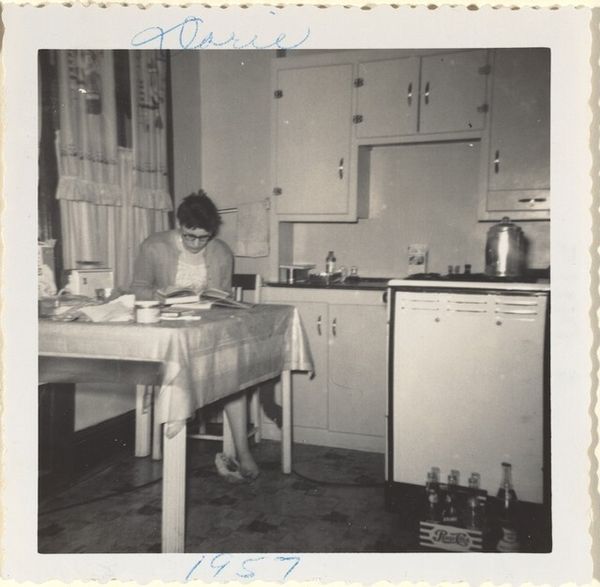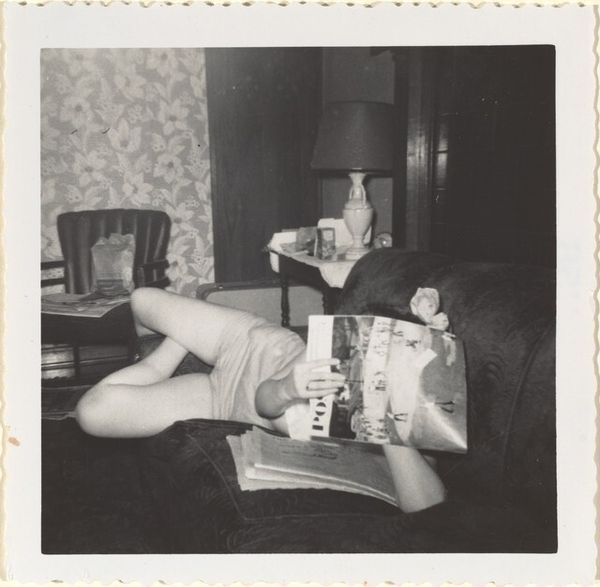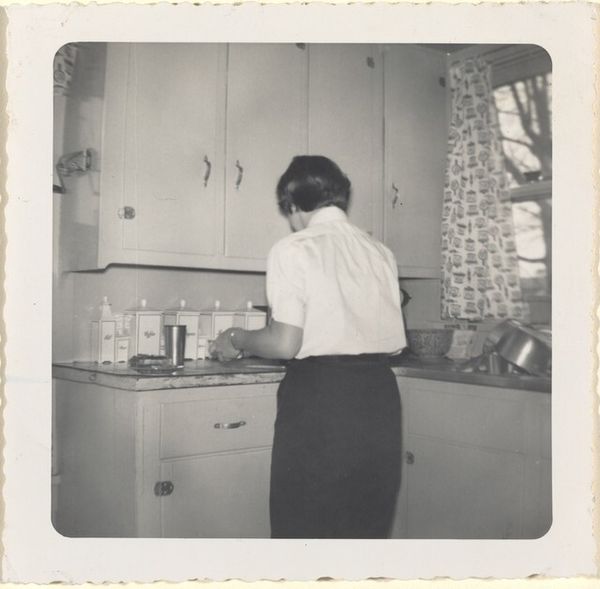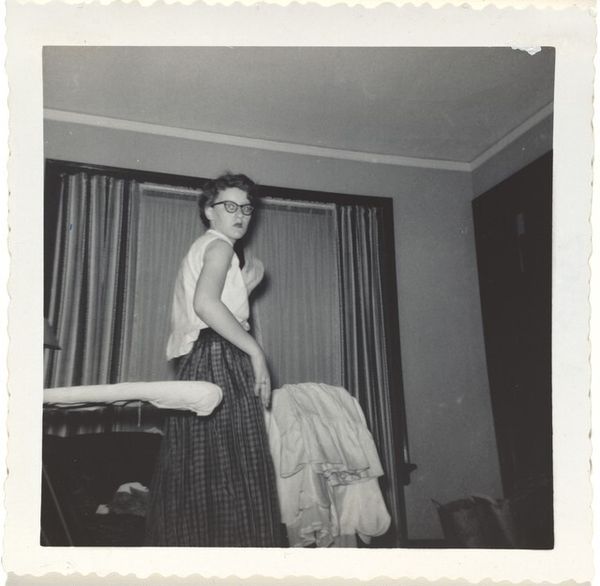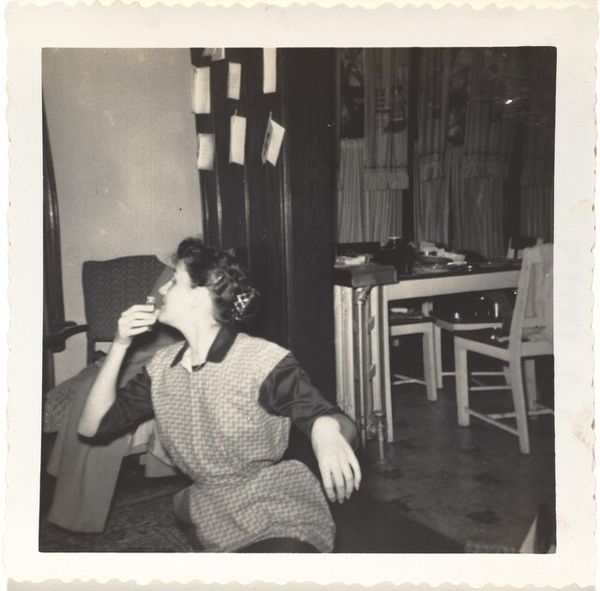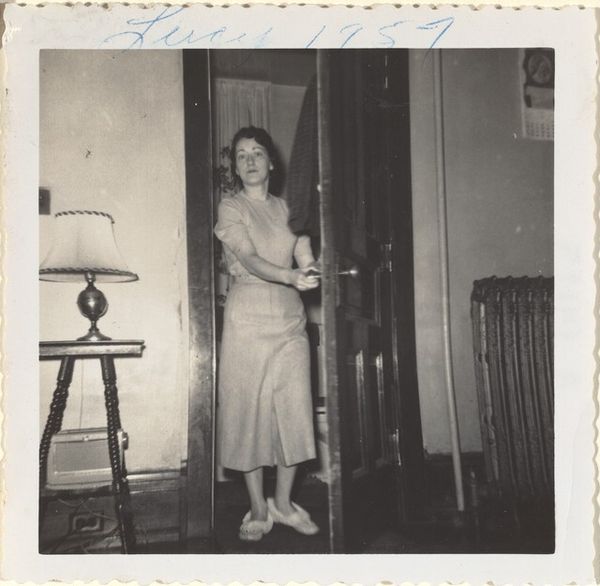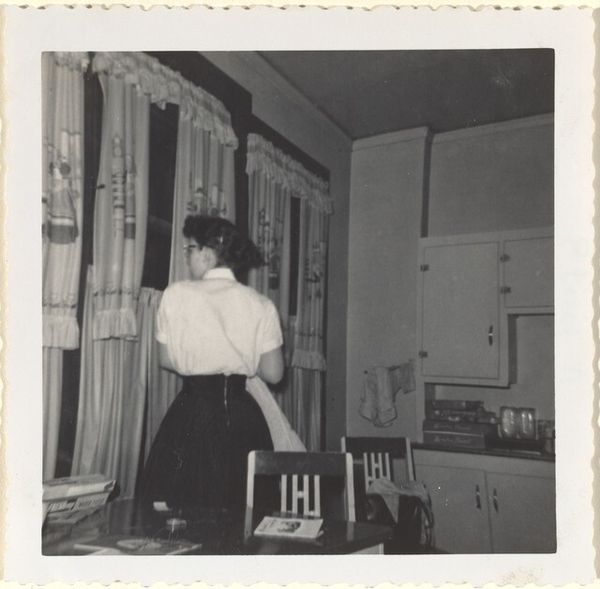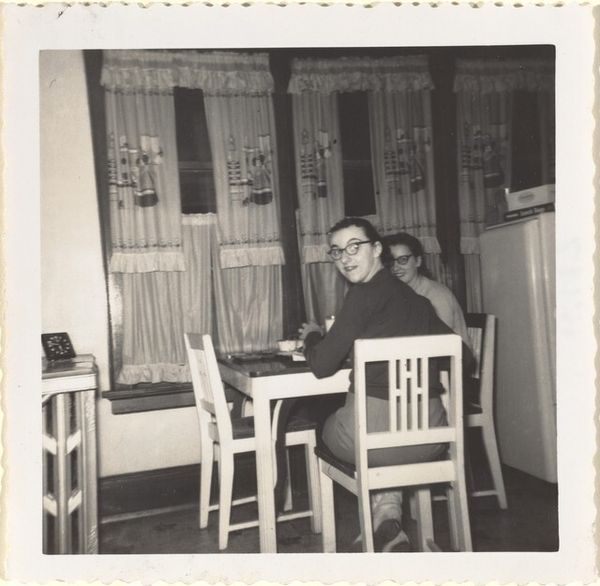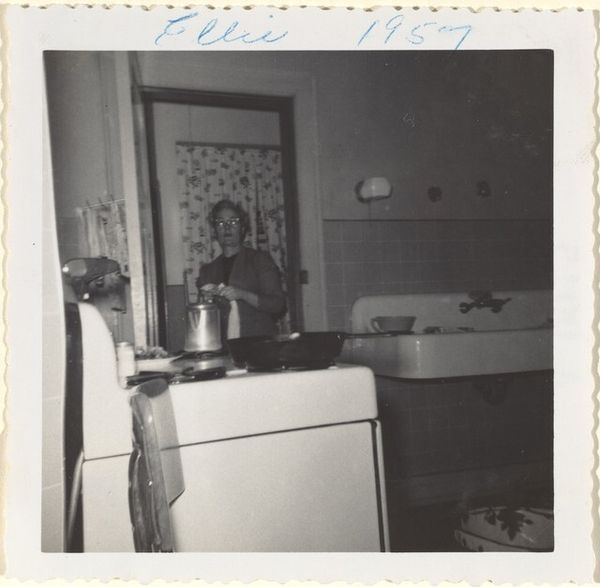
photography, gelatin-silver-print
#
portrait
#
print photography
#
archive photography
#
photography
#
historical photography
#
gelatin-silver-print
#
genre-painting
#
realism
Dimensions: image: 7.6 x 7.8 cm (3 x 3 1/16 in.) sheet: 8.8 x 9 cm (3 7/16 x 3 9/16 in.)
Copyright: National Gallery of Art: CC0 1.0
Editor: This is an untitled gelatin-silver print, assumedly by an anonymous artist, simply dated "Dorie July '56." The stark black and white and candid pose make it feel both intimate and distant. What strikes you about it? Curator: Initially, the composition arrests my gaze. Note the strong diagonal formed by the refrigerator which abruptly bisects the image field. This formal division creates a tension between the intimate domestic sphere of the sink, filled with disarrayed cloths, and the looming presence of this object. Editor: So the refrigerator isn’t just background clutter? Curator: Not at all. Its smooth, almost clinical surface contrasts markedly with the textured clutter in the sink. This play of textures—the softness of the fabric against the hard, reflective porcelain and metal—forms a dialogue about domestic labor and the material culture of the 1950s. Also note the subtle detail of her eyewear which mirrors the curved sink and faucet handles, uniting figure and ground with shape. Editor: I hadn't noticed the echoing forms before. Do you think the anonymity affects how we view the work? Curator: In a sense, yes. Without a known artistic intention, we are encouraged to engage with the pure formalism of the image: its balance, lines, and textures become the primary conveyors of meaning. We look closely at its formal language without the distraction of authorial intent. It is fascinating, is it not? Editor: Absolutely! Seeing how formal elements can create meaning, even in a seemingly casual snapshot, gives me a whole new perspective. Curator: Precisely. Focusing on these formal elements allows the photograph to communicate complex narratives. I think it's useful when teaching the art of visual description to my students.
Comments
No comments
Be the first to comment and join the conversation on the ultimate creative platform.

